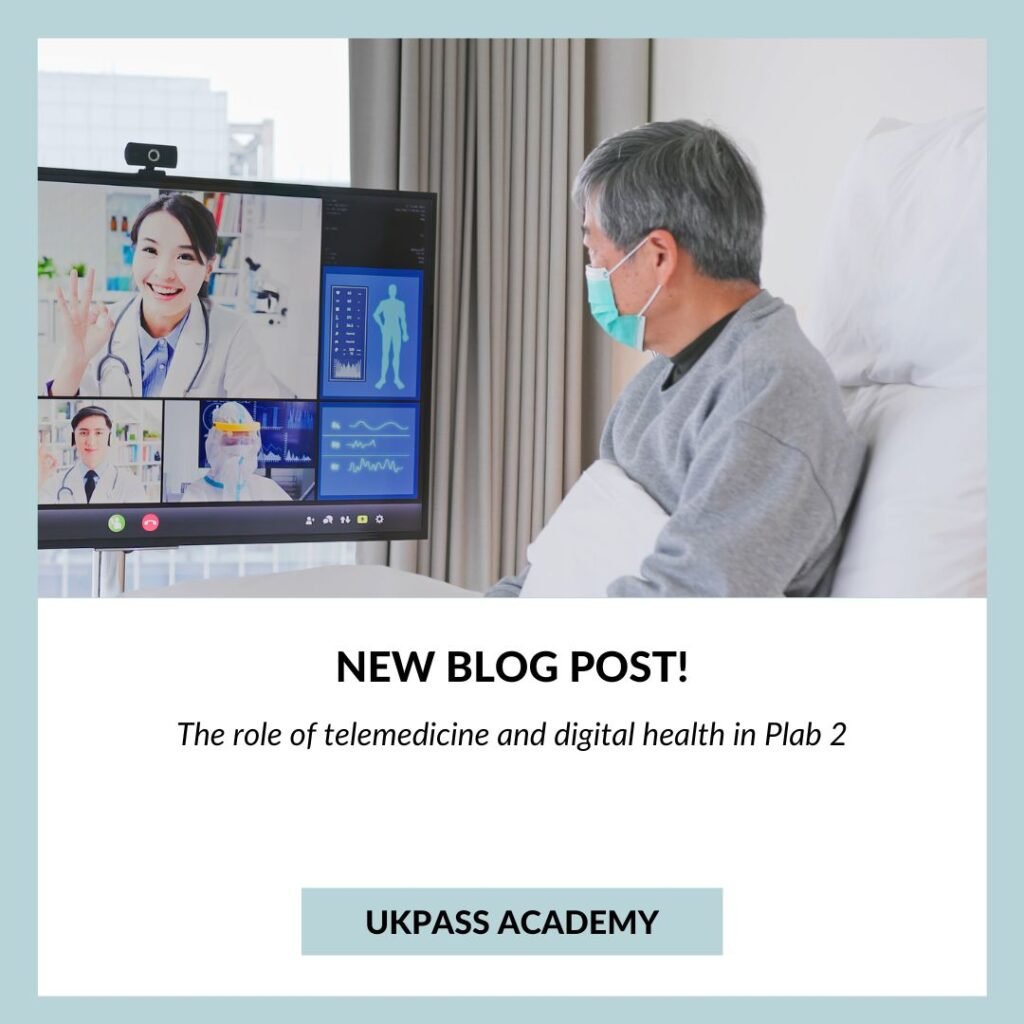In the ever-evolving landscape of medical education and assessment, the Professional and Linguistic Assessments Board (PLAB) 2 exam stands as a crucial milestone for international medical graduates aspiring to practice in the United Kingdom. As the healthcare industry embraces technological advancements, the integration of telemedicine and digital health technologies is reshaping the way medical assessments are conducted. In this blog, we delve into the transformative impact of telemedicine and digital health in PLAB 2, exploring how these innovations enhance the examination experience and better prepare candidates of PLAB 2 Course for modern healthcare practice.
Understanding Telemedicine and Digital Health
Telemedicine and digital health encompass a broad range of technologies and platforms aimed at delivering healthcare remotely. From teleconsultations to mobile health applications, these innovations have revolutionized healthcare delivery, transcending geographical barriers and expanding access to medical services. Key technologies include video conferencing software, electronic health records (EHRs), remote monitoring devices, and mobile apps tailored for medical education and assessment purposes.
The Traditional PLAB 2 Exam Format
The PLAB 2 exam traditionally assesses candidates’ clinical skills through objective structured clinical examinations (OSCEs) comprising various stations simulating real-life patient encounters. While this format has been effective in evaluating candidates’ competencies, it presents challenges such as logistical constraints, standardization issues, and limited scope for assessing certain clinical scenarios. As medical practice evolves, there is a growing need for innovation in medical assessment to ensure relevance and effectiveness.
Integrating Telemedicine and Digital Health in PLAB 2
To address the limitations of the traditional format, PLAB 2 has begun integrating telemedicine stations into the examination scenarios. These stations simulate teleconsultations, requiring candidates to interact with standardized patients remotely. Additionally, digital health platforms are utilized for tasks such as history taking, data interpretation, and patient management, providing a more immersive and realistic assessment experience. Virtual patient encounters and simulated teleconsultations further enhance candidates’ clinical reasoning and decision-making skills in a digital environment.
Benefits of Technology Integration in PLAB 2
The integration of telemedicine and digital health technologies offers numerous benefits for PLAB 2 candidates. Firstly, it enhances the realism and relevance of exam scenarios by simulating modern healthcare practices. Candidates gain exposure to telemedicine platforms and digital health tools commonly used in clinical settings, thereby improving their preparedness for contemporary medical practice. Moreover, technology integration enables remote participation and assessment, offering flexibility and convenience for candidates worldwide.
Challenges and Considerations
Despite its potential benefits, the integration of technology in PLAB 2 poses certain challenges and considerations. Ensuring the reliability and standardization of telemedicine assessments remains paramount, requiring meticulous design and calibration of exam scenarios. Moreover, addressing digital health literacy among candidates is essential to optimize their utilization of technology during the exam. Ethical and legal considerations, such as patient confidentiality and informed consent in teleconsultations, must also be carefully navigated.
Case Studies and Examples
Several institutions and organizations have successfully integrated telemedicine into medical education and assessment. For instance, the use of virtual patient encounters in medical curricula has been shown to enhance clinical reasoning and diagnostic skills among students. Real-world examples of digital health platforms used in medical examinations, such as virtual reality simulations and online case-based learning modules, highlight the diverse applications of technology in medical assessment. Testimonials from candidates and educators further attest to the efficacy of technology-enhanced PLAB 2 assessments in preparing candidates for the realities of modern healthcare practice.
Future Directions and Conclusion
As technology continues to advance, the integration of telemedicine and digital health in PLAB 2 is poised for further innovation and refinement. Potential advancements include the development of immersive virtual reality simulations, artificial intelligence-driven diagnostic tools, and remote proctoring solutions for secure online assessments. Ongoing research and evaluation are crucial in optimizing technology-enhanced medical assessments, ensuring their validity, reliability, and fairness. In conclusion, the integration of telemedicine and digital health technologies heralds a new era in medical assessment, empowering candidates to thrive in the ever-evolving healthcare landscape.
Conclusion
The journey of integrating telemedicine and digital health into PLAB 2 is not without its challenges, but the rewards are immense. By embracing these technologies, PLAB 2 is not only modernizing its examination methods but also better preparing candidates for the realities of modern healthcare practice. As we look towards the future, it’s clear that technology will continue to play a central role in medical education and assessment, shaping the next generation of healthcare professionals. Let us embrace this transformation and work together to ensure that PLAB 2 remains at the forefront of medical assessment, driving excellence and innovation in healthcare worldwide.

